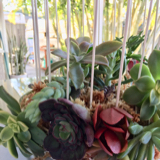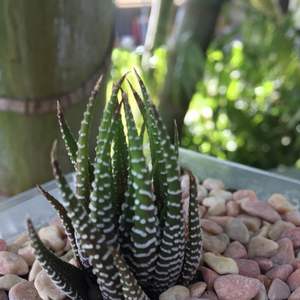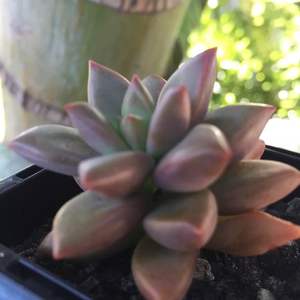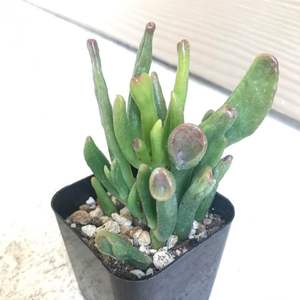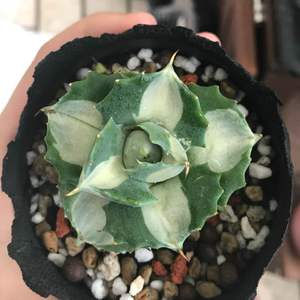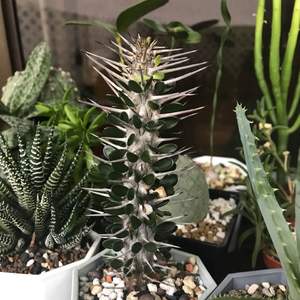文章
Miss Chen
2018年07月18日

Planting a vegetable garden in Missouri can be rewarding thanks to a relatively warm climate and a growing season that lasts from about April to October. But the variety of climates and temperature zones in the state can make it tricky to know when to start your vegetable garden.
Missouri planting climate

During growing season, Missouri gets between 60 and 90 days that are warmer than 86 degrees Fahrenheit. Missouri generally falls under Zones 5 and 6 on the USDA Plant Hardiness Zone Map, but the University of Missouri Extension divides the state into three areas, North, Central and South, in determining planting dates for vegetables. The Ozark plateau region also falls under the "North" planting categorization, even though it's in a more southern part of the state, due to its elevation. Planting times in each of these areas is affected by temperature and the date of the last frost. The southern part of Missouri has an average frost-free date of April 5. In northern Missouri, the average frost-free date is typically April 20, though the University of Missouri Extension notes that frost can hit until mid-May.
Missouri planting times

Planting dates vary by vegetable variety. The University of Missouri Extension offers a vegetable planting calendar that details planting dates for each vegetable based on region. Cold weather crops, such as beets, carrots, lettuce, peas, cabbage and cauliflower can be planted in March in the southern region. In the north, they can be planted in April, and in the central region they can be planted from mid-March to mid-April. Beans and cucumbers should be planted in mid- to late-April in the south and mid- to late-May in the north, and hey should be planted in early May in central Missouri. Warmer weather crops, such as peppers, squash and tomatoes, can be planted in May in the south, mid-May in central Missouri, and mid- to late-May in the northern region. Sweet corn can be planted from late April to mid-August in the south, from late April to early August in central Missouri and from early May to mid-July in the north.
Fall crops

Several varieties of vegetables can be sowed a second time for fall harvest. These dates are also listed on the MU Extension planting calendar. Beets, for example, can be sown from Aug. 1 to 15 in the south, Aug. 1 to 10 in central Missouri and July 25 to Aug. 1 in northern Missouri for a fall crop. Cabbage and carrots can be planted in early August in the south, in central Missouri from late July to early August and in late July in the north.
Missouri planting climate

During growing season, Missouri gets between 60 and 90 days that are warmer than 86 degrees Fahrenheit. Missouri generally falls under Zones 5 and 6 on the USDA Plant Hardiness Zone Map, but the University of Missouri Extension divides the state into three areas, North, Central and South, in determining planting dates for vegetables. The Ozark plateau region also falls under the "North" planting categorization, even though it's in a more southern part of the state, due to its elevation. Planting times in each of these areas is affected by temperature and the date of the last frost. The southern part of Missouri has an average frost-free date of April 5. In northern Missouri, the average frost-free date is typically April 20, though the University of Missouri Extension notes that frost can hit until mid-May.
Missouri planting times

Planting dates vary by vegetable variety. The University of Missouri Extension offers a vegetable planting calendar that details planting dates for each vegetable based on region. Cold weather crops, such as beets, carrots, lettuce, peas, cabbage and cauliflower can be planted in March in the southern region. In the north, they can be planted in April, and in the central region they can be planted from mid-March to mid-April. Beans and cucumbers should be planted in mid- to late-April in the south and mid- to late-May in the north, and hey should be planted in early May in central Missouri. Warmer weather crops, such as peppers, squash and tomatoes, can be planted in May in the south, mid-May in central Missouri, and mid- to late-May in the northern region. Sweet corn can be planted from late April to mid-August in the south, from late April to early August in central Missouri and from early May to mid-July in the north.
Fall crops

Several varieties of vegetables can be sowed a second time for fall harvest. These dates are also listed on the MU Extension planting calendar. Beets, for example, can be sown from Aug. 1 to 15 in the south, Aug. 1 to 10 in central Missouri and July 25 to Aug. 1 in northern Missouri for a fall crop. Cabbage and carrots can be planted in early August in the south, in central Missouri from late July to early August and in late July in the north.
0
0
文章
Miss Chen
2018年07月18日

How often a vegetable garden needs water depends on the weather, soil type, growth stage of the vegetables and other factors. Underwatering causes stringy, strongly flavored vegetables, but overwatering increases the risk of plant diseases and reduces vegetables' flavor. When in very wet soil, plants' roots drown, causing the plants to die. Signs of underwatering and overwatering in plants include pale, wilted leaves and poor growth. Regularly checking the soil moisture level gives the best indication of how often to water a vegetable garden.

Checking the Soil
Different kinds of soil hold water better than other kinds. Clay soils hold onto moisture, but sandy soils drain freely. A vegetable garden in any kind of soil needs water when the soil is dry to a depth of 2 inches, which is usually about once every four days during hot weather. A garden with clay soil may need water less frequently, and a garden in sandy soil may need water more often.
You can test soil's moisture level by pushing your fingers into the soil. Dry soil feels dry to the touch. Another test method is to insert a screwdriver or stick into the soil. Moist soil clings to a screwdriver or stick and looks darker than dry soil. Houseplant soil moisture meters are also useful for measuring soil moisture but are sometimes inaccurate.
If the soil is moist just below the soil surface, then usually it also is moist at vegetable plants' root zones, 6 to 8 inches deep. If you want to check deep soil's moisture level, then dig a hole 8 inches deep, and feel the soil at the hole's bottom.
Knowing Plants' Water Needs
Besides vegetable plants' growth stages, the kinds of vegetables in the garden also affect how often the garden needs water. For example, the annual vegetables corn (Zea mays) and bush beans (Phaseolus vulgaris) need more water when silking and flowering than during their other growth stages. Low soil moisture from those stages until harvest reduces crop yields in corn, beans and other summer vegetables.
Apply water to the garden when its soil surface is dry after sowing vegetables and until the seedlings are 4 to 5 inches tall. The soil for growing young vegetable plants should stay consistently moist to a depth of 3 to 4 inches. During hot dry weather, the garden may need watering every day.

Watering the Garden
Equipment for watering a vegetable garden includes garden hoses, watering cans, drip-irrigation systems, soaker hoses and sprinklers. Sprinklers are usually a poor choice because some of their water evaporates, and their water falls over the whole garden bed, which encourages leaf diseases and weeds. Applying water at the plant bases is the best method for watering a vegetable garden.
Connect a fine-spray rose device to a watering can or a soft-spray attachment to a garden hose for watering vegetable seeds and seedlings as well as other delicate plants. Apply water to the soil until it begins to puddle on the soil surface.
Drip-irrigation systems and soaker hoses supply water at plant bases through emitters or perforated hoses, which are connected to a water supply. These devices take time to install but reduce the time spent watering over the long term.
Saving Water
Mulches and weed control help save water in a vegetable garden. Water-permeable landscape fabric, paper and organic mulches such as straw, compost, wood shavings, rice hulls and bark placed on the soil surface reduce water evaporation from the surface. Weight landscape fabric and paper with stones to prevent wind from lifting them. Spread a layer of an organic mulch 3 or 4 inches thick around vegetable plants. Don't allow mulches to touch vegetable stems, or else the stems may rot.
Weeds compete with vegetable plants for water. Remove weeds growing near your vegetables by pulling them upward out of the soil, and shallowly hoe the rest of the vegetable garden once per week.

Checking the Soil
Different kinds of soil hold water better than other kinds. Clay soils hold onto moisture, but sandy soils drain freely. A vegetable garden in any kind of soil needs water when the soil is dry to a depth of 2 inches, which is usually about once every four days during hot weather. A garden with clay soil may need water less frequently, and a garden in sandy soil may need water more often.
You can test soil's moisture level by pushing your fingers into the soil. Dry soil feels dry to the touch. Another test method is to insert a screwdriver or stick into the soil. Moist soil clings to a screwdriver or stick and looks darker than dry soil. Houseplant soil moisture meters are also useful for measuring soil moisture but are sometimes inaccurate.
If the soil is moist just below the soil surface, then usually it also is moist at vegetable plants' root zones, 6 to 8 inches deep. If you want to check deep soil's moisture level, then dig a hole 8 inches deep, and feel the soil at the hole's bottom.
Knowing Plants' Water Needs
Besides vegetable plants' growth stages, the kinds of vegetables in the garden also affect how often the garden needs water. For example, the annual vegetables corn (Zea mays) and bush beans (Phaseolus vulgaris) need more water when silking and flowering than during their other growth stages. Low soil moisture from those stages until harvest reduces crop yields in corn, beans and other summer vegetables.
Apply water to the garden when its soil surface is dry after sowing vegetables and until the seedlings are 4 to 5 inches tall. The soil for growing young vegetable plants should stay consistently moist to a depth of 3 to 4 inches. During hot dry weather, the garden may need watering every day.

Watering the Garden
Equipment for watering a vegetable garden includes garden hoses, watering cans, drip-irrigation systems, soaker hoses and sprinklers. Sprinklers are usually a poor choice because some of their water evaporates, and their water falls over the whole garden bed, which encourages leaf diseases and weeds. Applying water at the plant bases is the best method for watering a vegetable garden.
Connect a fine-spray rose device to a watering can or a soft-spray attachment to a garden hose for watering vegetable seeds and seedlings as well as other delicate plants. Apply water to the soil until it begins to puddle on the soil surface.
Drip-irrigation systems and soaker hoses supply water at plant bases through emitters or perforated hoses, which are connected to a water supply. These devices take time to install but reduce the time spent watering over the long term.
Saving Water
Mulches and weed control help save water in a vegetable garden. Water-permeable landscape fabric, paper and organic mulches such as straw, compost, wood shavings, rice hulls and bark placed on the soil surface reduce water evaporation from the surface. Weight landscape fabric and paper with stones to prevent wind from lifting them. Spread a layer of an organic mulch 3 or 4 inches thick around vegetable plants. Don't allow mulches to touch vegetable stems, or else the stems may rot.
Weeds compete with vegetable plants for water. Remove weeds growing near your vegetables by pulling them upward out of the soil, and shallowly hoe the rest of the vegetable garden once per week.
0
0







